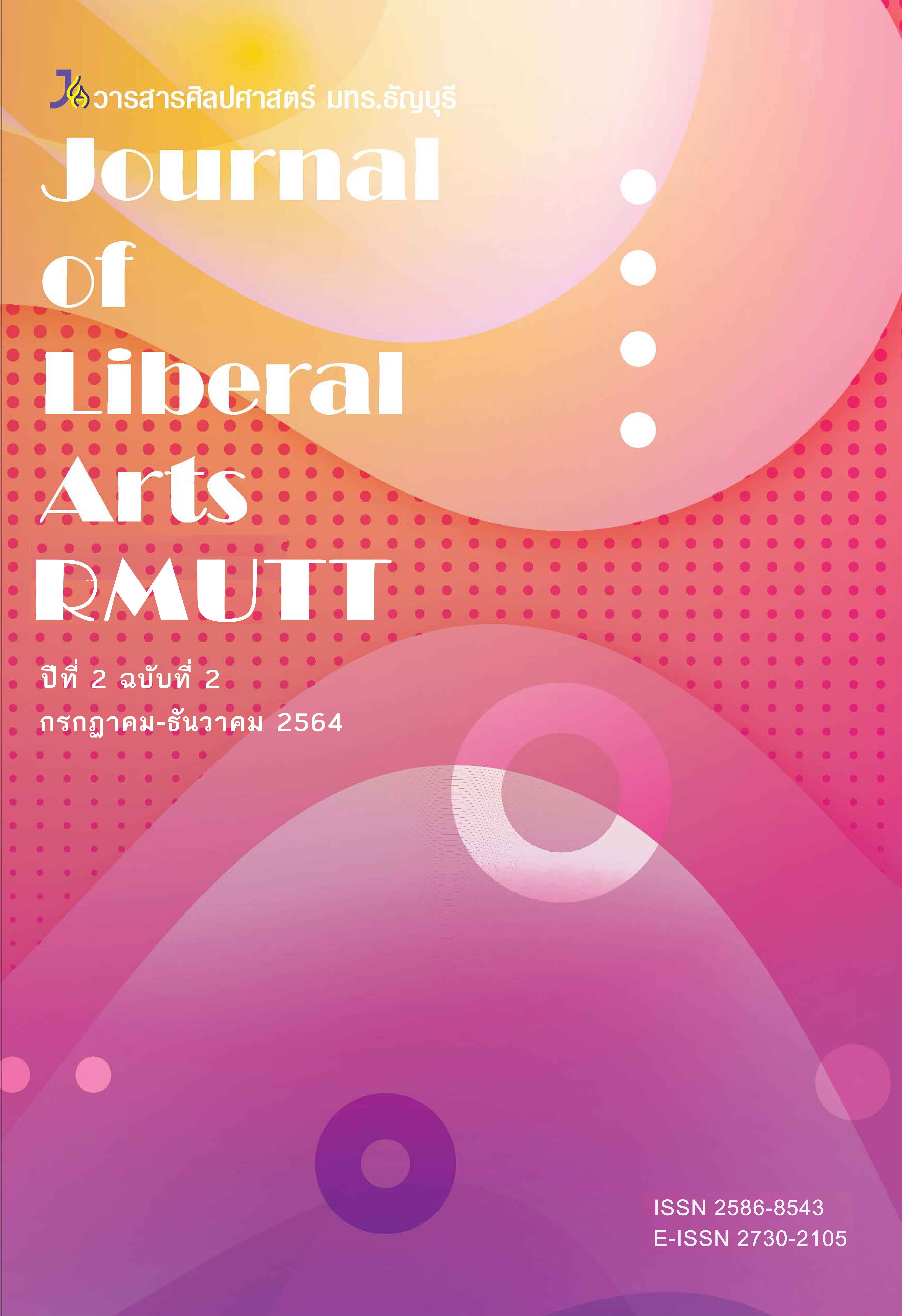Measurement Model of Reduce Inequality in Local Implementation
Keywords:
measurement model, reduce inequality, local implementationAbstract
This research aim is to analyze measurement model of reduce inequality in local implementation. It uses quantitative method from 450 individual participants who lives in a municipality in Pathum Thani province, Thailand which is the largest population through Taro Yamane formula at tolerance level 0.05. Research tool divided five score levels that had reliability value with alpha Cronbach 0.976. Analyzed technique to measure the model is confirmatory factor analysis such as first order factor analysis and second order analysis. The research finding displays that measurement model has a consistency index specified in the following criteria can be accepted (Chi-square=79.41, X2/df = 1.42, GFI = 0.97, AGFI =0.96, CFI = 0.99 และ RMSEA = 0.031). It identifies three factors, e.g., officer implementation, people stage, and increasing opportunities. They can explain structure of the model 73-93 percentage which highest people stage and lowest increasing opportunities. Measurement model of reduce inequality might be an appropriate assessment model to explain how local implementation going under central policy goal and can be considered to implementation of other local organizations.
References
ไชยันต์ สกุลศรีประเสริฐ. (2556). การวิเคราะห์องค์ประกอบเชิงยืนยัน. วารสารจิตวิทยาคลินิก, 44(1), 1-16.
นันทิดา จันทร์ศิริ. (2558). ธรรมาภิบาลระดับท้องถิ่น: มุมมองด้านการมีส่วนร่วมของประชาชนในการบริหารจัดการท้องถิ่น. วารสารมนุษยศาสตร์และสังคมศาสตร์, 7(2), 95 – 117.
ภรัณยู มายูร และ อลงกรณ์ อรรคแสง. (2561). บทบาทของศูนย์ดำรงธรรมอำเภอในการแก้ไขปัญหาความเหลื่อมล้ำในเขตอำเภอบรบือ จังหวัดมหาสารคาม. วารสารการเมืองการปกครอง, 8(1), 81-94.
สมพงษ์ เกศานุช และคณะ. (2560). บทวิเคราะห์นโยบายแห่งรัฐ จาก “ประชานิยม” สู่ “ประชารัฐ”: ความเหมือนและข้อแตกต่างจากการกำหนดทิศทางของรัฐบาลไทย. วารสารวิชาการธรรมทรรศน์, 17(3), 361-375.
สมศักดิ์ อมรสิริพงศ และ อาชว์ภูริชญ์ น้อมเนียน. (2560). “ELDERFARE Model”: รูปแบบและกลไกการจัดสวัสดิการสังคม เพื่อลดความเหลื่อมล้ำทางสังคม สำหรับกลุ่มแรงงานผู้สูงอายุนอกระบบ ในเขตเศรษฐกิจพิเศษ จังหวัดสระแก้ว. วารสารวิชาการนวัตกรรมสื่อสารสังคม, 5(2), 29-40.
อัครวินท์ ศาสนพิทักษ์ และสมศักดิ์ อมรสิริพงศ์. (2564). การสังเคราะห์บทบาทเมืองอัจฉริยะที่มีผลต่อการลดความเหลื่อมล้ำทางสังคม: การสังเคราะห์อภิมาน. วารสารรัฐศาสตร์และรัฐประศาสนศาสตร์, 12(1), 7-28.
Bevir, M. (2010). Democratic Governance. Princeton and Oxford: Printon University.
Comrey, L.A. and Lee, H.B. (1992). A First Course in Factor Analysis (2nd ed.). Hillside, NJ: Lawrence Erlbaum Associates.
Hair J. et al., (2006). Multivariate Data Analysis (6th ed.). Upper Saddle River, NJ: Prentice-Hall.
Jachtenfuchs, M. (2001). The Governance Approach European Integration. Journal of Comman Market Studies, 39(2), 245-264.
JR, Karl D. & Shaun, G. (2012). What Makes a State and Peaceful? Good Governance, Legitimacy and Legal-Rationalty Matter Even More for Low-Income Countries. Civil Wars, 14(4), 499-520.
Regina, O. A. & Ukadike, O.J. (2013). Good Governance: A Panancea for Peace and Stability in Nigeria Nation. Public Policy and Administration Research, 3(4), 121-125.
Srimahawaro, W. (2018). The reduction of sustainable inequality and unfair transitional period of Thailand. Narkbhutparitat Journal Nakhon Si Thammarat Rajabhat University, 10(2), 40-48.
Tabachnick, B.G. and Fidell, L.S. (2007). Using Multivariate Statistics (5th ed.). New York: Allyn and Bacon.
Tedeschi, R.G. and Calhourn, L.G. (2004). Posttraumatic Growth: Conceptual Foundations and empirical evidence. Psychological Inquiry, 15(1), 1-18.
Ved P. Nanda. (2006). The Good Governance Concept Revisited. The ANNALS of the American. Academy of Political and Social Science, 603(1), 269-283.
Downloads
Published
How to Cite
Issue
Section
License
Copyright (c) 2021 Thai-Journal Citation Index Centre

This work is licensed under a Creative Commons Attribution-NonCommercial-NoDerivatives 4.0 International License.








